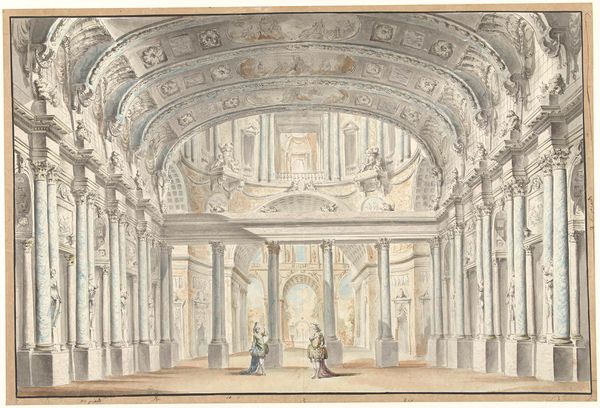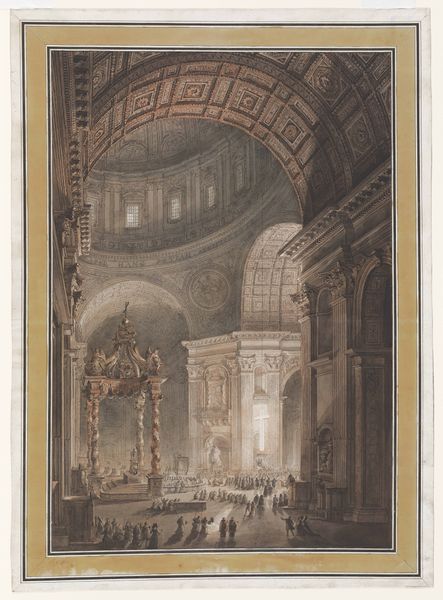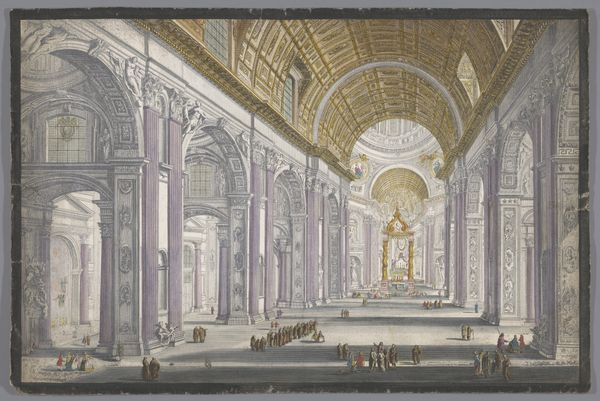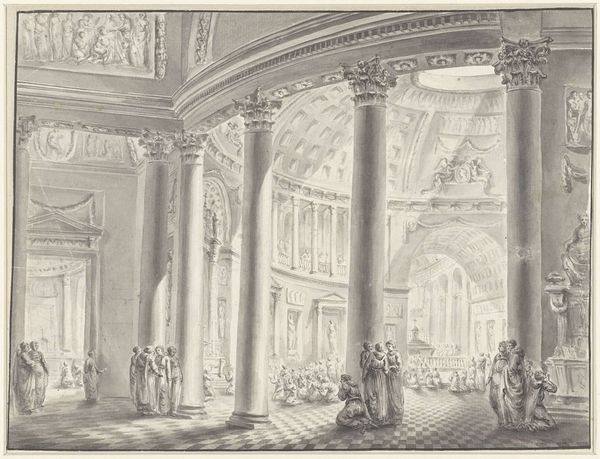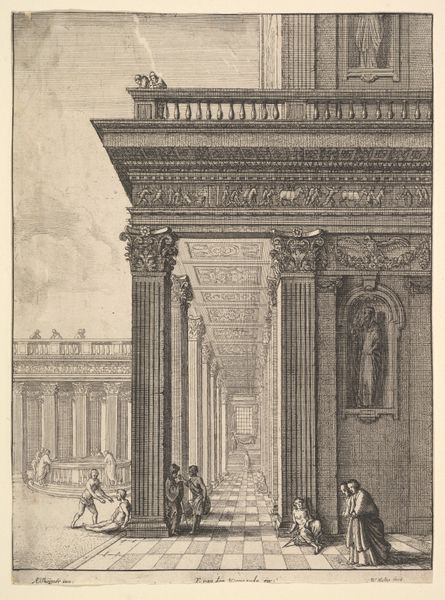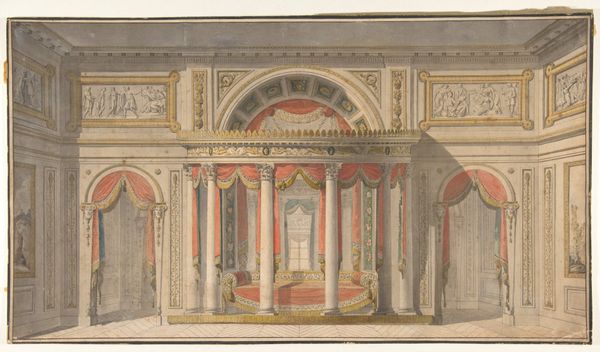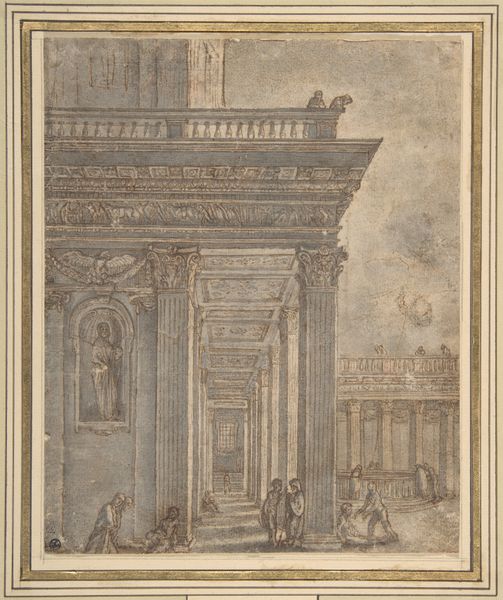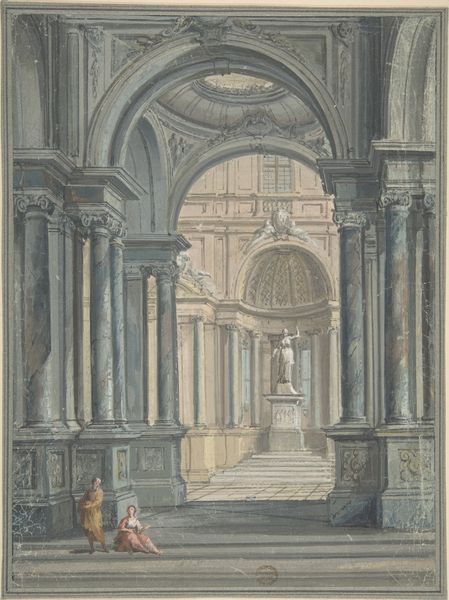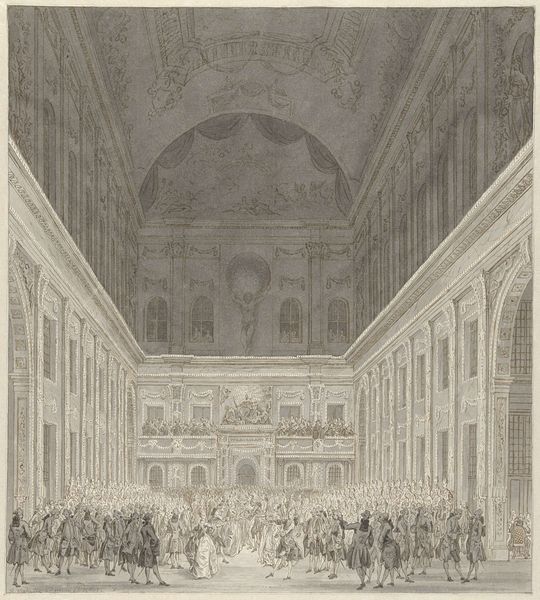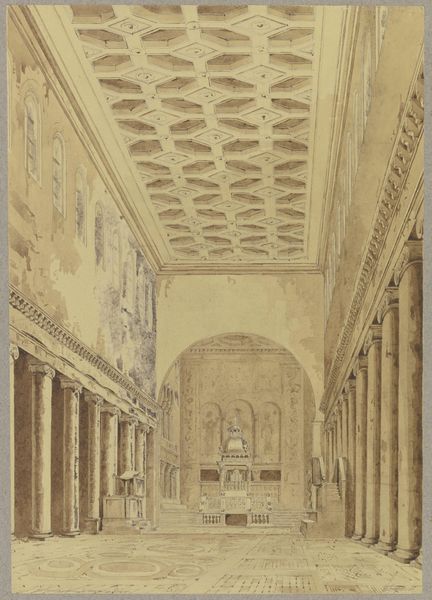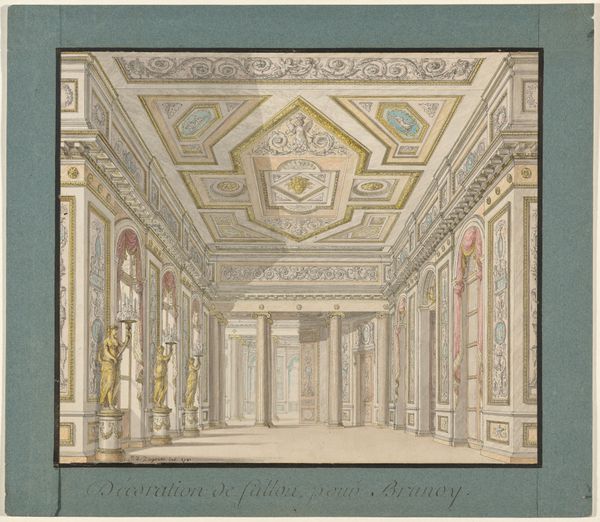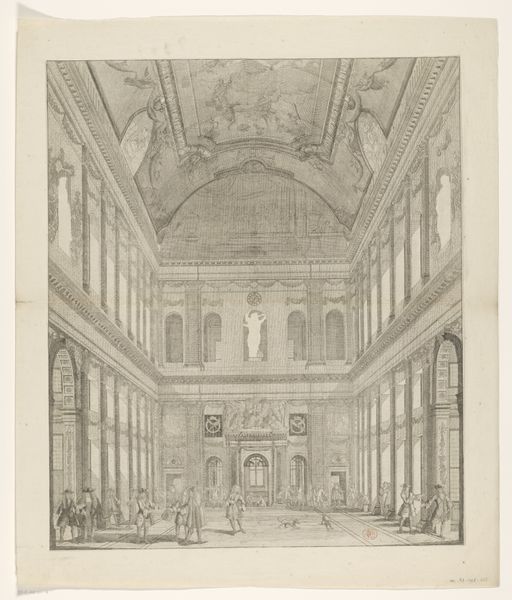
The Nave, Apse, and Crossing of a Cathedral for Berlin 1827
0:00
0:00
drawing, architecture
#
drawing
#
neoclacissism
#
architectural photography
#
perspective
#
history-painting
#
architecture
Dimensions: sheet: 26.9 x 17.1 cm (10 9/16 x 6 3/4 in.) image: 25.6 x 15.8 cm (10 1/16 x 6 1/4 in.)
Copyright: National Gallery of Art: CC0 1.0
Editor: So, here we have Karl Friedrich Schinkel's "The Nave, Apse, and Crossing of a Cathedral for Berlin," created in 1827. It's a drawing showcasing a massive architectural interior. What strikes me most is the sheer scale depicted; it's hard to imagine how this drawing translates to an actual building and the labor it would require. What are your thoughts? Curator: I'm drawn to the representation of labor itself, even in this preliminary form. Consider the physical act of creating this detailed drawing – the meticulous rendering of each column, each figure. It speaks volumes about the labor involved in architectural visualization. How does the artist manage to show something that is supposed to become real? Editor: That's interesting; I hadn’t considered that level of craftsmanship as its own form of labor. And the materials too; Schinkel used a relatively fragile medium - paper - to portray the solidity of stone. Was the architecture eventually produced as designed in the drawing? Curator: Whether or not it was built exactly as depicted, it functions as a document of architectural aspirations and their socio-economic implications. Look at how perspective is used to create an exaggerated sense of depth, almost to dwarf the figures within the scene. This wasn’t only about visualizing the space but also influencing patrons and gathering support for ambitious construction projects. Who could really afford to construct it at the end of the day? Editor: So, you're saying the drawing itself played a crucial role in potentially initiating and justifying further investment of labour, capital, and resources in this very grandiose plan. Is that accurate? Curator: Precisely. The artwork highlights the link between creative labor, material representation, and capital investment of grandiose dreams that have many social effects if constructed. Editor: Fascinating. I never thought about a drawing having such material consequences! I'll definitely view architectural drawings differently from now on. Curator: Exactly! Consider every element as a tangible decision; its consequences would ultimately alter landscapes, economies, and entire societies, through bricks, iron and labour!
Comments
No comments
Be the first to comment and join the conversation on the ultimate creative platform.
